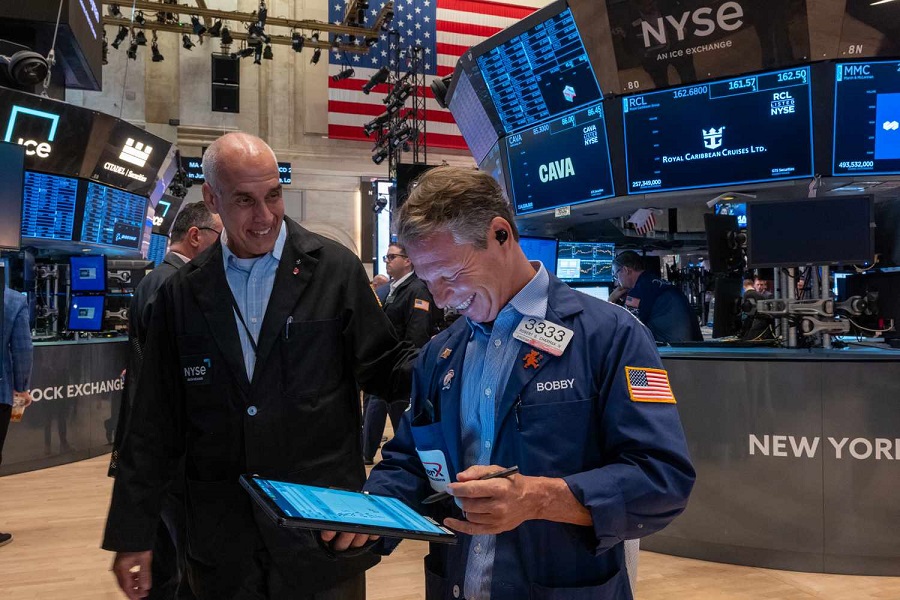What if the AI-led stock bubble bursts?
We don’t know if it is bursting now, or will burst in the future, and nor does anybody else. But it is worth asking how asset prices like government bonds and the US dollar will react if the bottom falls out of the stock market given what we saw earlier in the year.

For while the Nasdaq suffered a huge 60% annual fall starting in March 2000, the US dollar managed to rise over the period, by around 6% in broad trade-weighted terms.
For what we saw earlier in the year was the market reacting in a counter-intuitive way. The stock market tumbled but, so too did the US dollar and treasury prices. In fact, the treasury market became so “yippy” as President Trump put it that those more versed in the way of the bond market, such as Treasury Secretary Bessent, probably told him he needed to back off tariffs for a while, which was why a 90-day tariff moratorium was announced.
The talk at the time was of a ‘sell America’ trade. But this episode stands in contrast to much of what has come before, as periods of heightened risk aversion, as reflected in plunging stocks have customarily been associated with a stronger dollar and higher treasury prices. If we go back to what could prove the forerunner of any AI crash now – the dot.com bubble of 2000 – we see that other US assets responded in a ‘conventional’ way.
For while the Nasdaq suffered a huge 60% annual fall starting in March 2000, the US dollar managed to rise over the period, by around 6% in broad trade-weighted terms. This was in spite of the fact that the dot.com bubble and bust was clearly conceived in the US, proving, once again that it did not matter that crisis originated in the US, the dollar still rose. It did the same during the 2008/09 global financial crisis, which was again primarily US driven, coming about as a consequence of excessive leverage in US housing-related debt instruments.
In addition to the strength in the US dollar during these US-centric crisis periods, we also saw treasury yields fall sharply. In short, the conventional wisdom from these crisis periods seemed to be that the US dollar and treasury prices rallied whenever stocks slumped.
This being said, many analysts have long argued that these effects have dumbed down over time, or at least when it comes to the US dollar. What we mean by this is that each successive crisis has tended to produce smaller and smaller rallies in the US dollar right through until the last one, the April tariff tantrum, which saw the US dollar fall.
Steven Barrow, Head of Standard Bank G10 Strategy, said his argument has been that policymakers have taken action through these crises, and particularly the global financial crisis, to ensure there is a large Fed-generated backstop of US dollars that foreign central banks can borrow to ease any dollar-shortage problems that arise. “Our thinking has been that foreign holders of US assets typically fund these by borrowing dollars via FX swaps. They may hold US stocks or bonds over a long period of time but rollover their funding via short-term dollar swaps. This keeps their positions FX hedged and, notably, does not impact the spot market and hence the value of the US dollar”, said Steven Barrow.
However, when asset prices like stocks suddenly implode, these swaps are converted into spot positions as investors flee to the liquidity of the spot FX market, buying back their US dollars and so lifting the greenback. But by supplying US dollars through central bank FX swaps, the central banks were able to ease these US dollar shortage problems.
What was different about the April episode was that investors seemed to be sitting on largely unhedged long-dollar positions and rushed to hedge these through FX swaps, so prompting spot sales of US dollars, and a US dollar slump. The question now is whether investors have become more confident about the US dollar in recent months such that hedges have been taken off and open long-dollar positions adopted again. Or whether the hedging surge around April was just a downpayment on a longer-term structural decision to hold less US dollar risk, even if investors were prepared to hold more US assets, like stocks. Only time will tell, and only then if stocks crack. Steven Barrow believes that the US dollar and treasuries should weaken if we see an AI-related stock meltdown.








